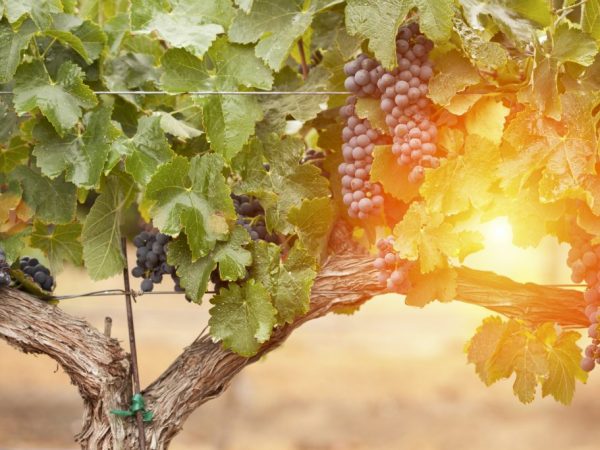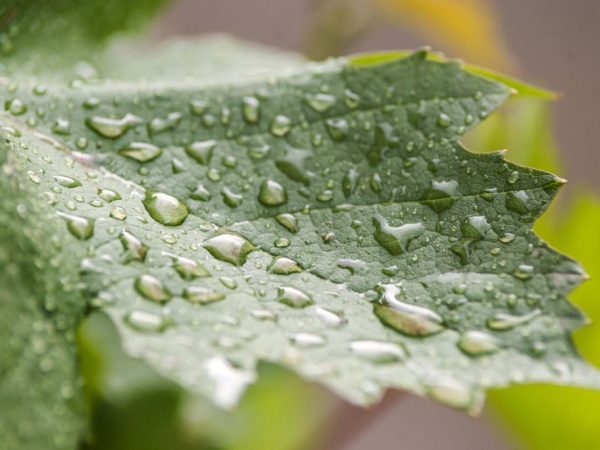Watering grapes in autumn
The vine easily tolerates drought, but moisture, fertilization and proper care significantly increase the yield of the crop. Watering grapes in autumn plays a big role in its development and cultivation. Compliance with the rules of irrigation helps to strengthen the plants and get a good harvest in the future.

Watering grapes in autumn
The value and types of irrigation
Continuous moisture in the vineyards affects the growth of the bushes and increases the number and size of fruits.
The most productive grapes will be if the gardener understands the peculiarities of irrigation. Depending on the season and the period of plant growth, one of the types of watering is selected:
- water charging;
- landing;
- irrigation;
- vegetative irrigation.
Moisture charging autumn watering
Moisture irrigation provides the vineyard with moisture for a long time. It is held in spring and autumn. Autumn watering of grapes is of great importance for the culture. The soil needs irrigation before the temperature drops. Drying out of the soil is negatively reflected in the winter: it freezes, cracks, the roots deteriorate. If there is a sufficient amount of moisture in the soil, this will protect it from cracking, preserve nutrients.
Abundant irrigation in autumn affects the fact that water penetrates into the ground by 1.5 m. This allows you to keep moisture reserves until the next summer period. In times of drought, the roots take advantage of this moisture. If the weather is rainy in autumn, water recharge irrigation is not carried out.
Watering rules
If you follow all the rules of autumn irrigation, it will bring a generous harvest of berries.
Before moistening, a method is chosen in which water enters the soil and to the roots, while the stem and foliage must remain dry. Watering is carried out slowly, on loose soil into previously prepared holes, provided that there are no irrigation pipes in the ground. Cracked and dry soil is loosened in the morning, it is better to water the vineyards in the evening, the next day - to loosen the soil again.
In areas where plants do not grow under cover, water after the leaves fall. In the presence of shelters, moisture in the fall is carried out after the "warming" of the bushes. The deadlines are mid-October-early November. In autumn, the wetting of late varieties that will be stored for a long time is stopped 30 days before harvesting.
Features of watering

It is recommended to water the plants in the evening.
The bushes planted in rows are moistened along the furrows. With this method, the hose is placed in the furrow, the water flows until it soaks the row along its entire length. Then the hose is transferred to the next furrow.
Single bushes are watered to form pits or ditches around. Each bush has enough 7 liters of warm water. Watering is worth it in the evening, while there will be more benefits for the plants, moisture will remain better.
Irrigation of bushes from buckets provides that after adding each portion of moisture, it is worth waiting until it is absorbed, then the next portion is poured.The recesses near the bushes are removed and covered with earth: this allows you to retain moisture and ensure the flow of air.
If the vineyards are located on clay soil, the water may not be absorbed, so they make punctures with a pitchfork.
Subsoil watering
One of the most effective methods is subsurface irrigation. With it, water under pressure enters the ground through the pipe system through the holes in them.
Drip irrigation
With drip moistening, the liquid enters through a pipeline or a small-diameter hose system. A positive feature of drip and subsurface irrigation is the reduction of water consumption and its combination with fertilizers. Moreover, its organization requires a special system and equipment.
Possible watering errors
Watering the vines is worth it right. Excessive irrigation is harmful: this is how water displaces air, while the plants lack oxygen.
When leaving and moisturizing, they make a number of mistakes:
- use of water from a well for irrigation;
- moisture ingress on the leaves, which leads to the occurrence of fungal diseases;
- abundant watering when combined with humidification of other crops;
- frequent watering with a hose connected to the water supply.
Conclusion
Autumn watering of grapes is carried out at a certain time. It enriches the roots with moisture and nutrients. Compliance with the rules and features of irrigation provide the plant with protection for the winter period from freezing, and contribute to productivity.


